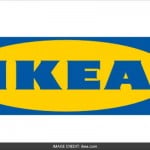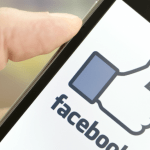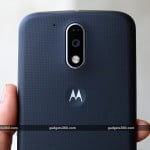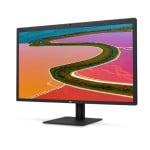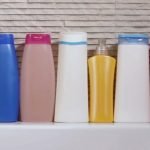
Toronto rapper Drake leaves a Queen St. West pop up shop where he was handing out T-shirts to promote his upcoming album in Toronto in this April 24, 2016, file photo.
COLE BURSTON/THE CANADIAN PRESS
MAD FOR MERCH
Music and fashion have always shared an artistic connection. Now, explains Nazanin Shahnavaz, Drake, Bieber and their pop peers are taking a page out of the designer playbook to cash in on elevated tour merch
When Aubrey Graham (a.k.a. Drake) was looking for someone to design his Summer Sixteen tour wardrobe, he didn’t reach out to the many global fashion brands that would have no doubt fallen over one another for the opportunity. Instead, he turned to emerging Toronto-based designer Vejas Kruszewski. As Toronto’s unofficial ambassador, Drake has worked hard to put the city on the map through his lyrics, his involvement with the Toronto Raptors basketball organization and his annual OVO Music festival. The artist’s latest local boosting effort harnesses the recent buzz 19-year-old Kruszewski has been garnering – he is the youngest designer to have won a coveted LVMH Prize, awarded to him by the likes of Karl Lagerfeld, Marc Jacobs and Nicolas Ghesquière for his “exceptional talent” – to, once again, put Toronto on the map.
The collaboration – which saw Kruszewski create oversized bombers and jeans covered in contrast stitching for Drake – is also notable because it signals another shift in the long-fluctuating relationship between the music and fashion industries. In the face of dwindling record sales, and during an era of Instagram-supported see-now-buy-now retailing, music artists are approaching their tour clothing and concert merchandise as both a highly lucrative revenue stream and a creative endeavour that ups their artistic credibility. Not satisfied with selling logo T-shirts for $20 a pop, they are launching tours in tandem with billion-dollar brands, producing elevated merchandise sold through pop-up concept stores and using their song lyrics and music videos to promote their own products in a way that openly embraces and celebrates corporate branding on a scale not seen before.


An Instagram photo from the label Vejas shows Drake dressed in clothing by the eponymous designer for the rapper’s Summer Sixteen tour, while the Jordan X OVO Holiday 2016 collection includes the classic Air Jordan XII with signature OVO gold accents.
Music and fashion: There is a long-standing interwoven relationship between two pillars of pop culture that capture the aesthetics of an era. Their convergence has defined wave after wave of youth identity. From the sharp suits of the jazz age to rock and roll’s denim-clad teenagers, punk’s penchant for leather and hip hop’s claim to the hoodie, the symbiosis has popularized alternative styles and turned them into big business. “If you rewind 20 years, you’d walk into a mall and music was sold everywhere,” says Mat Vlasic, chief executive of Bravado, a merchandise and licensing company that has represented many of the world’s biggest stars including The Rolling Stones and Lady Gaga. “Since the consumption of music has gravitated into a digital medium, there’s very little physical product. But, you do see [music merchandise] hanging [at] Barneys or Selfridges and I think that is such a powerful tool.”
As music has moved online, fashion has begun to fill a void for artists and their fans. Offering a materiality that music struggles to find in a world of streaming, fashion provides the music industry with something physical to sell again. For a younger generation of listeners who have grown up without bricks-and-mortar music outlets like HMV and MusicWorld as a focus for their social and cultural lives, tour apparel and the pop-up shops that sell it provide an analogue channel to the artists they love.

German fashion blogger Lisa Hahnbück was spotted in early October wearing a Justin Bieber Purpose Tour sweatshirt.
CHRISTIAN VIERIG/GETTY IMAGES
Last May, Bravado facilitated Justin Bieber’s two-day takeover of the designer streetwear boutique Nomad in Toronto. The event coincided with Bieber’sworldwide Purpose tour and fans flocked to the men’s-wear shop on Queen Street West hoping to take home a piece of the Biebs. Designed by Fear of God’s Jerry Lorenzo (Lorenzo is also behind Bieber’s tour wardrobe), a selection of T-shirts, sweatshirts and hats priced between $50 and $195 were available for purchase, along with pieces made exclusively for the city featuring maple leaf motifs. The boutique’s slick visual merchandising – carefully curated rails with a handful of hoodies hung like haute couture – combined with Lorenzo’s “elevated normcore” aesthetic made the pop-up feel like the launch of a designer collection rather than a concert merch stand.
Drake and Bieber are only the latest artists to cross from music into fashion. In 2015, Kanye West, a pioneer of fashion and music’s evolving cozy paradigm, launched Yeezy, his line with Adidas. The rapper’s athleisure collection of military-streetwear silhouettes in a palette of nude shades brought buzz back to a brand that had lagged in popularity behind rival Nike for some time. Last year, Adidas’ overall sales rose by five per cent in North America, bringing in about $3-billion (U.S.), and much of its new cachet can be traced back to the superstar collaboration. Two years prior to the partnership, Adidas sold 1.5 million pairs of its Boost line of trainers; it has since sold an estimated 12 million pairs of the footwear range that figures prominently in West’s collection.

Earlier this year, to sell a mix of designer tour merch and his Yeezy line, Kanye West opened 21 Life of Pablo pop-up shops simultaneously around the world.
ASTRID STAWIARZ/GETTY IMAGES

A fan wears a shirt from a Kanye West pop-up shop in Manhattan in August.
SPENCER PLATT/GETTY IMAGES
Several million dollars (plus an undisclosed percentage of royalties) later, West’s fashion foray didn’t stop at Yeezy. He applied his knack for transforming unisex basics into sought-after luxury goods to his concert merchandise. During his 2016 The Life of Pablo tour, the Grammy-winning rapper simultaneously launched 21 near-identical pop-up stores around the world, stocked with tour merch designed in collaboration with artist Cali Thornhill Dewitt. Items included oversized T-shirts and hoodies featuring song lyrics in gothic lettering, a hard rock-meets-hip hop aesthetic now making its way through every echelon of the fashion world. Eager fans lined up on the streets of New York, Sydney and Berlin to get their hands on the Pablo swag, which quickly sold out.
Concert souvenirs have been essential to tour revenue for decades, but as pop stars increasingly rely on live shows for income, merch has become a key part of the music economy. “We live in an age of ‘I want it now’ from consuming on your phone to streaming and being able to get fashion delivered to your door same day – it’s the future and the future is now,” says Vlasic, who believes the pop-up model utilized by the music industry is influencing broader retail strategies. “From a manufacturing standpoint, we realized that was really important in the augmenting of our supply chain and our business – we needed to be nimble and move quickly. And I think you see that philosophy touching the fashion world now.”


Colette’s Rihanna collection and pieces from Rihanna’s collaboration with PUMA Sportstyle.
But artists are uniquely placed to promote more than just concern merch. Dubbed the “most marketable celebrity in the world” by Vogue in 2016, Rihanna is one superstar who doesn’t shy away from cashing in on her cool and has signaled that fashion will be key to her future. In a move that highlights how quickly the fashion and music business model has evolved, Rihanna launched a retrospective pop-up shop at the chic Paris store Colette this summer displaying items from every collaboration she has ever done. The shop included merchandise from her recent Anti world tour, her ManoloBlahnik denim shoe collection, her Dior sunglasses, plus pieces from Puma and Stance. Shoppers could even leave the shop smelling like RiRi thanks to her portfolio of seven fragrances. “When we work with people like Rihanna or Drake or Pharrell, obviously the fans follow,” says Guillaume Salmon, head of communications at Colette. “The fans want to connect with the artist and those partnerships increase our sales and give us greater visibility on social media.”

Abel Tesfaye, a.k.a. The Weeknd, is Puma’s new global brand ambassador and creative collaborator.
With artists and product makers cutting deals and brands vying for viewers’ attention, the line between entertainment and advertisement is blurring, too. In the world of “advertainment,” record labels sell product placement in music videos as a source of additional revenue, rather than simply using the spots as a means to promote album sales, and the tactic is now seamlessly integrated into many artists’ fashion strategies. On Sept. 28, Canadian singer and producer The Weeknd released his video for Starboy, which features him prominently wearing pieces by Puma. The following day he was named Puma’s new brand ambassador. The release of the video and the news of his appointment function together as one media event, which raises the question: Was Puma’s announcement timed to publicize his video or was the video an ad for his appointment? Either way (or both), it’s clear that such a major corporate endorsement doesn’t compromise artistic integrity in the eyes of his fans. If anything, it proves an artist’s brand viability and strengthens their creative integrity, two selling points long appreciated by designer fashion consumers and now openly embraced by music fans.
[“source-ndtv”]

